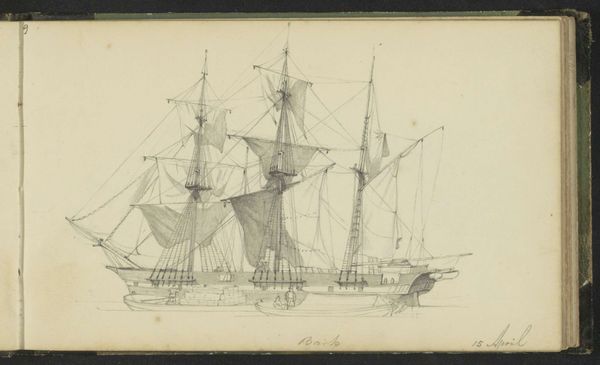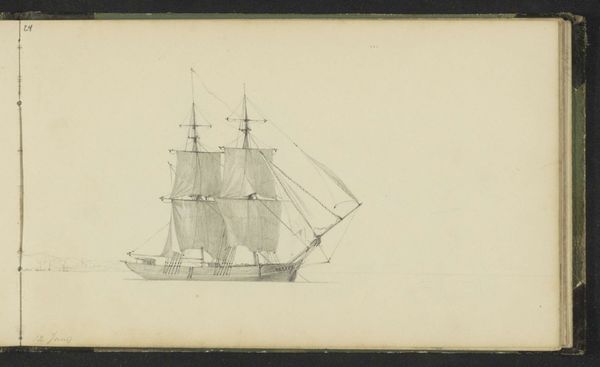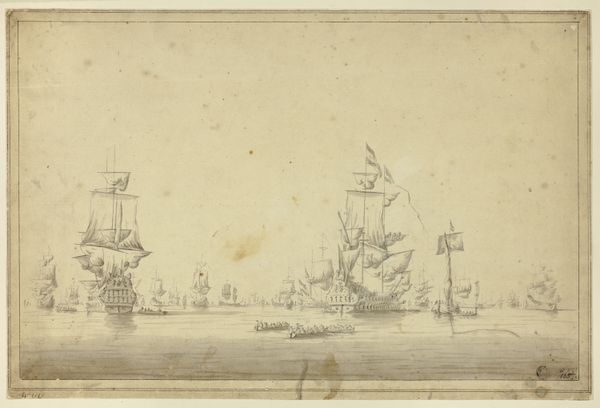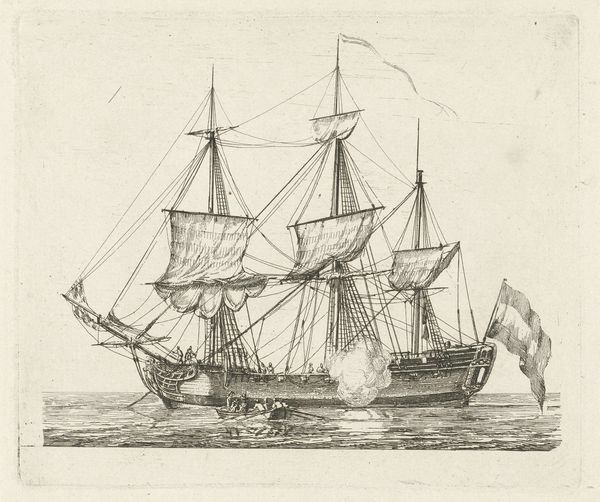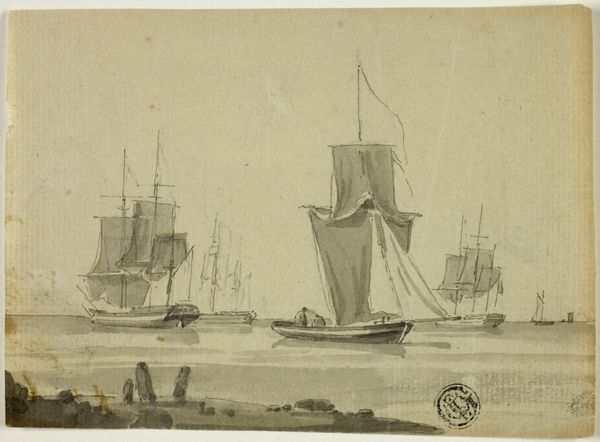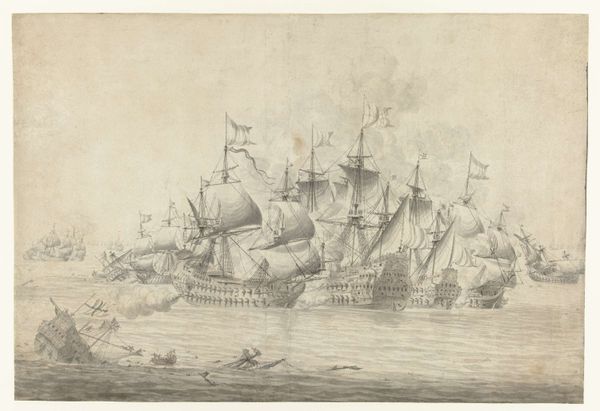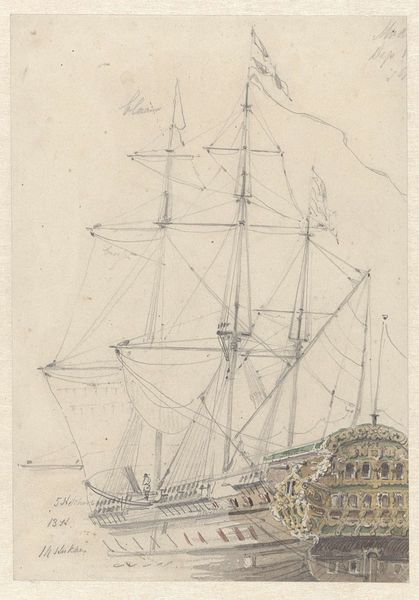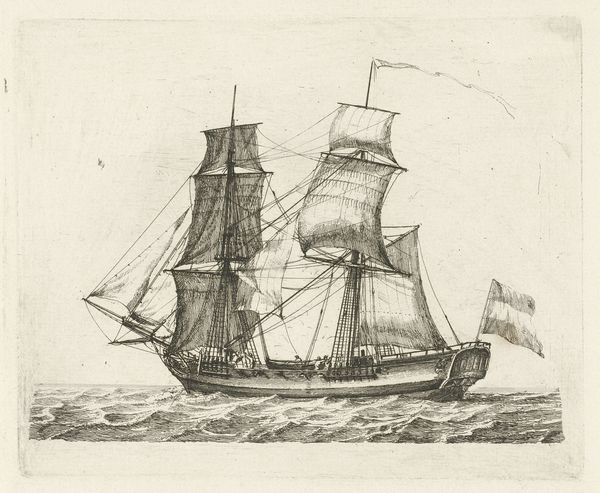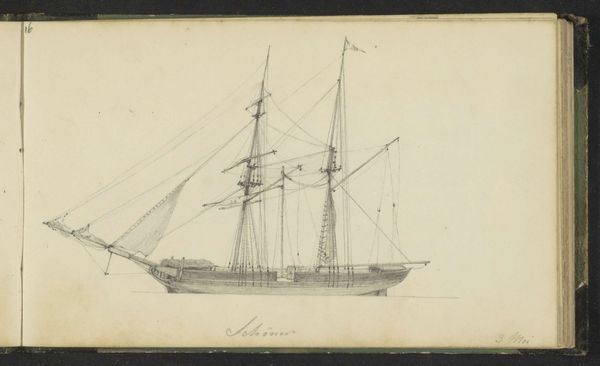
drawing, paper, ink, pen
#
drawing
#
toned paper
#
quirky sketch
#
sketch book
#
incomplete sketchy
#
landscape
#
paper
#
personal sketchbook
#
ink
#
sketchwork
#
pen-ink sketch
#
sketchbook drawing
#
pen
#
watercolour illustration
#
sketchbook art
#
realism
Copyright: Rijks Museum: Open Domain
Curator: Looking at this drawing by Hendrik Abraham Klinkhamer, titled "Afgemeerde driemaster" or "Moored Three-Master," created sometime between 1843 and 1846, what’s your initial take? It's currently held at the Rijksmuseum. Editor: Immediately, I’m struck by its… stillness. All those ships, lines, sails—and yet there’s such quietude conveyed. The monochrome emphasizes the detail, almost like a blueprint waiting to be animated, the page has something of a quality that I like. Curator: That stillness, that "blueprint" quality, speaks to me of Klinkhamer’s keen observational skill and the deliberate act of capturing a specific moment. The precision in the rendering of the rigging, the way light catches the sails... there’s an almost dreamlike quality, as if the artist is inviting us to embark on a personal journey, sailing away... to a land of rest. Editor: I see that meticulousness, definitely. For me, it emphasizes the incredible labor involved in building and maintaining these vessels. Each of those lines represents hours of work, a web of human effort distilled onto the page using simple tools—pen and ink, on paper with probably a long, slow degradation—the residue of social relationships within merchant trading. Curator: Absolutely, and when you consider the toned paper he’s using, that sense of material history intensifies, yes? Klinkhamer’s use of pen and ink transforms the very stuff of commerce into a form of personal expression, and these materials are very well combined. The lines that make it may tell more than just an aesthetic appreciation but perhaps point to its functional potential... Editor: Which gets at a critical point: that we see “high art” here co-existing alongside craft, navigation, trade... Were these sketchbook studies meant only for Klinkhamer’s eyes, a sort of practice, or were they intended for wider circulation? It's the perfect picture. I really like these works on paper, that show this human desire to produce things that function and bring beauty, even within industrial capitalism. Curator: I agree entirely. It speaks to the way artists of that era wrestled with the changing landscape of industrialization. Klinkhamer immortalizes these majestic ships and the sailors involved. For me, Klinkhamer’s quiet "Afgemeerde driemaster" feels as pertinent now as ever before, reminding us to pause and recognize the complex beauty in objects created for purposes far beyond pure aesthetic pleasure. Editor: Indeed. The interplay between human labor and artistry, that's what resonates most with me. It provokes questions about artmaking itself. Thanks!
Comments
No comments
Be the first to comment and join the conversation on the ultimate creative platform.
